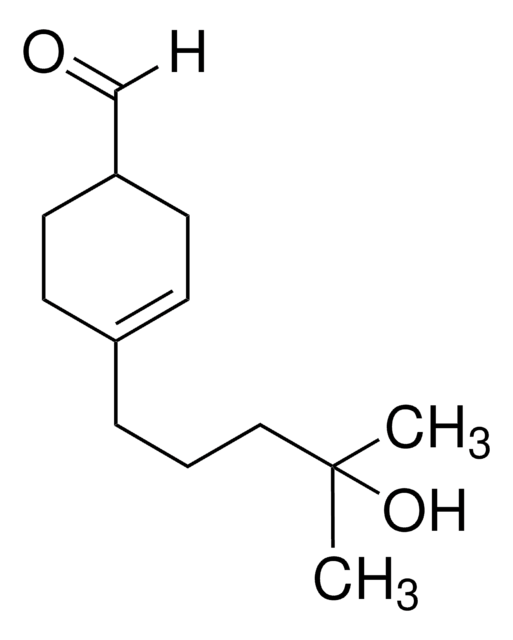288993
α-Amylcinnamaldehyde
97%, mixture of cis and trans
Synonym(s):
alpha-Amylcinnamaldehyde
About This Item
Recommended Products
Assay
97%
form
liquid
refractive index
n20/D 1.557 (lit.)
bp
287-290 °C (lit.)
density
0.97 g/mL at 25 °C (lit.)
storage temp.
2-8°C
SMILES string
[H]C(/C(CCCCC)=C/C1=CC=CC=C1)=O
InChI
1S/C14H18O/c1-2-3-5-10-14(12-15)11-13-8-6-4-7-9-13/h4,6-9,11-12H,2-3,5,10H2,1H3/b14-11+
InChI key
HMKKIXGYKWDQSV-SDNWHVSQSA-N
Looking for similar products? Visit Product Comparison Guide
General description
Signal Word
Warning
Hazard Statements
Precautionary Statements
Hazard Classifications
Aquatic Chronic 2 - Skin Sens. 1
Storage Class Code
10 - Combustible liquids
WGK
WGK 2
Flash Point(F)
294.8 °F
Flash Point(C)
146 °C
Personal Protective Equipment
Regulatory Listings
Regulatory Listings are mainly provided for chemical products. Only limited information can be provided here for non-chemical products. No entry means none of the components are listed. It is the user’s obligation to ensure the safe and legal use of the product.
PRTR
Class II Designated Chemical Substances
FSL
Group 4: Flammable liquids
Type 3 petroleums
Hazardous rank III
Water insoluble liquid
ISHL Indicated Name
Substances Subject to be Indicated Names
ISHL Notified Names
Substances Subject to be Notified Names
JAN Code
288993-VAR:
288993-100ML:
288993-BULK:
288993-500ML:
Certificates of Analysis (COA)
Search for Certificates of Analysis (COA) by entering the products Lot/Batch Number. Lot and Batch Numbers can be found on a product’s label following the words ‘Lot’ or ‘Batch’.
Already Own This Product?
Find documentation for the products that you have recently purchased in the Document Library.
Our team of scientists has experience in all areas of research including Life Science, Material Science, Chemical Synthesis, Chromatography, Analytical and many others.
Contact Technical Service









